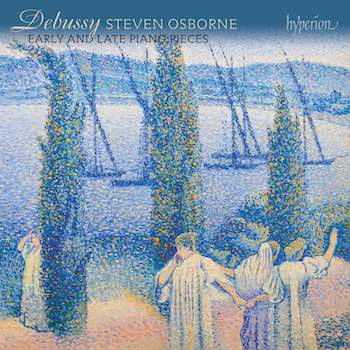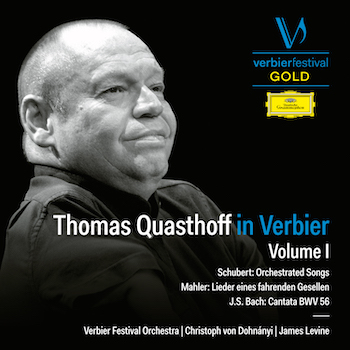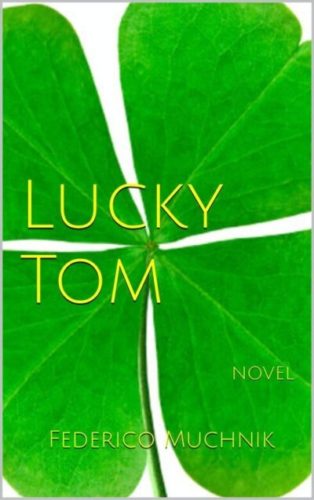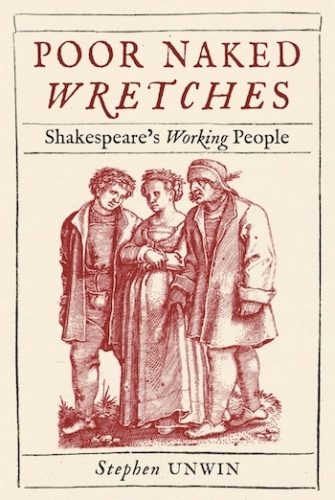November Short Fuses — Materia Critica
Each month, our arts critics — music, book, theater, dance, television, film, and visual arts — fire off a few brief reviews.
Film
This documentary is a nakedly feel-good one with a “things-keep-getting-better” trajectory.

A scene from The Return of Tanya Tucker — Featuring Brandi Carlile.
Brandi Carlile, perhaps the most popular and beloved contemporary folksinger, sees it as her duty to celebrate those who came before her. There she was on the Newport stage this summer, gasping with fangirl excitement at Joni Mitchell’s one-night jubilant return to performance. It was Carlile who had persuaded Mitchell to make that historic appearance. But Carlile’s truly heroic work in the trenches was, in 2019, bringing Tanya Tucker back into the spotlight after the country star left show business and went 17 barren years without making an album. How that music miracle happened is the subject matter of Kathlyn Horan’s literal-titled documentary The Return of Tanya Tucker — Featuring Brandi Carlile.
This film is a nakedly feel-good one with a “things-keep-getting-better” trajectory. And it just skirts being an infomercial for Tucker and her Grammy-nominated comeback album, While I’m Living, for which we witness the recording of a handful of its stellar songs. But I believe most people seeing The Return will leave their skepticism at the portal as I did, and just root hard for Tucker to succeed in the second act of a tough life. At age 60, the chain-smoking, tequila drinker really is the clichéd “survivor,” with a trail of substance abuse and living as a single-mom in a trailer with an infant daughter. Her friend Loretta Lynn would telephone and ask if she needed money. Tucker had ditched her singing completely because of mourning the early deaths of both her parents. Her tough dad had been her manager forever, since, in 1977 at 13, she’d broken precociously on the charts with “Delta Dawn.” At 22, she ran off with Glenn Campbell, 44, for romance and cocaine.
Fortunately for Tucker (with this she agrees), Carlile had grown up dazzled by the old records. When Carlile realized that the favorite singer of her adolescence had disappeared from sight, she searched Tucker out and gently coaxed the reluctant, very suspicious ex-star to return to the studio for a new record. That Carlile succeeded in her idealistic goal is amazing. Frankly, Tucker had never heard of her, and sent a query text to a friend, “Who is this bitch?” The bulk of The Return is devoted to the touching, unlikely friendship and trust between America’s favorite “out” queer singer and the gruff but fragile and vulnerable C&W belter with the now pink hair, the hard-knocks voice, the lived-in face. Carlile is so blessedly patient and gentle with her charge, ever encouraging and complimentary. A wish, a tiny one, is that Tucker were more beholden to earlier women country singers. Nope, it’s not Kitty Wells or Patsy Cline that she raves about. It’s Merle Haggard and, beyond all, Elvis.
— Gerald Peary
Classical Music
A powerful excursion into the distinctively beautiful world of Debussy.
 Unless you are in luck and familiar with the Scottish pianist Steven Osborne’s performances of Debussy, the bland title of this latest disc, Debussy: Early and Late Piano Works (Hyperion), suggests an exercise in checking off boxes. But, as in his two earlier, and excellent, Debussy recordings, this exquisite pianist brings an adroit blend of sensibility and brains to each piece. Osborne is a gifted player of French piano music. (I reviewed for the Arts Fuse a wonderful two-piano concert featuring him and Paul Lewis). Osborne is also, interestingly, a gifted interpreter of Rachmaninoff as well.
Unless you are in luck and familiar with the Scottish pianist Steven Osborne’s performances of Debussy, the bland title of this latest disc, Debussy: Early and Late Piano Works (Hyperion), suggests an exercise in checking off boxes. But, as in his two earlier, and excellent, Debussy recordings, this exquisite pianist brings an adroit blend of sensibility and brains to each piece. Osborne is a gifted player of French piano music. (I reviewed for the Arts Fuse a wonderful two-piano concert featuring him and Paul Lewis). Osborne is also, interestingly, a gifted interpreter of Rachmaninoff as well.
Some of the repertoire on this disc is already cherished by pianists and music lovers (Suite bergamasque, with its third movement, Clair de Lune, Two Arabesques, and the ever-popular Rêverie). The surprise here is the unusual selection of short pieces. Many were previously unknown to this Debussy-lover. And that’s strange: like most harpists, I have spent countless hours scouring over and performing Debussy piano compositions, which work uncannily well when performed on the harp.
Osborne’s unusual program opens with the Danse bohémienne, Debussy’s first work for piano, from 1880. It was not published until 1932, 14 years after the composer’s death. The work received a horrible review from Tchaikovsky: “Nice but too short with themes that don’t go anywhere, and the form is bungled and not unified.” Debussy followed this with Mazurka (1903), a work also unknown to me. This time the biting criticism came from Debussy himself (“I really have no taste for this kind of piece — especially now.”) Next up are the two very popular and winsome Arabesques, both in every harpist’s gig bag. Along with these tuneful pieces comes the saccharine yet beloved Rêverie (1890). Debussy told his publisher that “It’s bad.” Two lovely, rather unknown, compositions follow, Valse romantique and Ballade slav (revised in 1903 and its title’s geographical adjective deleted.)
The glorious 15-minute, four-movement Suite Bergamasque is at the heart of the album. I listened to dozens of recordings of this work while I was remolding it into a harp piece — none rivaled Osborne’s ravishing performance. Gorgeous renditions of Pre’lude and Menuet precede the arrival of many people’s favorite Debussy work, Clair de Lune. Many years have gone by since this suite cast its spell over me. I have come to adore much more the piece’s fourth movement, Passepied (written during Debussy’s busy year, 1890; it wasn’t published until 1905).
Much of the rest of this unusual and seductive album is made up of rarely heard Debussy gems: Tarantella styrene, Nocturne, Homage à Haydn, Elegie, and the composer’s final piece for piano, Les soirs illuminés par l’ardeur du charbon (1917). Three of the seven compositions in Images (1894) complete a powerful excursion into the distinctively beautiful world of Debussy.
— Susan Miron
This recording of Johannes Brahms’s A-minor Concerto for Violin and Cello, featuring Anne-Sophie Mutter and Pablo Ferrández, is nothing if not fervent and poetic.
 Clara Schumann was no fan of Johannes Brahms’s A-minor Concerto for Violin and Cello: “Nowhere has it the warmth and freshness which are so often to be found in his works,” was how she put it. Would she have liked it better had she heard Anne-Sophie Mutter and Pablo Ferrández playing it instead of Joseph Joachim and Robert Hausmann? Who knows.
Clara Schumann was no fan of Johannes Brahms’s A-minor Concerto for Violin and Cello: “Nowhere has it the warmth and freshness which are so often to be found in his works,” was how she put it. Would she have liked it better had she heard Anne-Sophie Mutter and Pablo Ferrández playing it instead of Joseph Joachim and Robert Hausmann? Who knows.
She mightn’t have complained about the piece lacking “warmth,” though: Mutter and Ferrández’s new recording (Sony Classical) of the so-called Double Concerto with Manfred Honeck and the Czech Philharmonic Orchestra (CPO) is nothing if not fervent and poetic. They’re a wonderfully sympathetic pairing, matching articulations; gracefully tossing figures back and forth; freely shaping the score’s exposed, lyrical moments. Much of the credit for this is due to Mutter, who dials back her star wattage and reins in her sometimes heavy use of vibrato; the result is a true partnership.
Of course, conductor and orchestra contribute much, too. Honeck’s one of a tiny class of maestros who nearly always has something illuminating to say about the standard canon. He does here, highlighting the Concerto’s latent rhythmic energy and its overarching melodic construction. The CPO responds with playing of bold purpose, excellent balances, and vigorous, Brahmsian style.
To fill out the disc, Mutter and Ferrández are joined by pianist Lambert Orkis for Clara Schumann’s Piano Trio. They bring the same focus and heat to this 1846 effort’s play of Sturm und Drang as the string players did the Brahms. The result is a reading that thrives on drama, especially in the turbulent first movement, as well as subtlety: the short Andante’s rhythmic and textural variations all speak vitally.
A varied celebration of one of our era’s greatest voices – and a reminder of what’s been missing since baritone Thomas Quasthoff’s premature retirement in 2012.
 Fans of the great baritone Thomas Quasthoff should jump at this collection (from Deutsche Grammophon) of previously unreleased tracks taped at the Verbier Festival in 2003. Granted, the singer recorded all this repertoire — orchestrations of Schubert songs, Mahler’s Songs of the Wayfarer, and J.S. Bach’s cantata BWV 56 — with other ensembles and conductors, and around the same time. Still, the opportunity to hear alternate takes can be instructive.
Fans of the great baritone Thomas Quasthoff should jump at this collection (from Deutsche Grammophon) of previously unreleased tracks taped at the Verbier Festival in 2003. Granted, the singer recorded all this repertoire — orchestrations of Schubert songs, Mahler’s Songs of the Wayfarer, and J.S. Bach’s cantata BWV 56 — with other ensembles and conductors, and around the same time. Still, the opportunity to hear alternate takes can be instructive.
His Schubert, for instance, accompanied here by the Verbier Festival Orchestra (VFO) and Christoph von Dohnányi, is sometimes more forward and colorful than it was with Claudio Abbado and the Chamber Orchestra of Europe in 2002: the play of timbres in Anton Webern’s arrangement of “Tränenregen” speak more luminously here, and a faster tempo gives Quasthoff’s phrasings greater urgency. The same goes for the present account of Jacques Offenbach’s setting of “Ständchen,” though textures in the Abbado-led “Erlkönig” (orch. Max Reger) are, generally, cleaner.
Quasthoff’s account of Mahler’s Gesellenlieder with James Levine at the VFO’s helm is markedly similar in tempo and spirit to his contemporaneous reading with Pierre Boulez and the Vienna Philharmonic. If the balance between voice and orchestra from Switzerland isn’t quite so refined as in Vienna, the climax of “Ich hab’ ein glühend Messer” is more intense and the concluding “Die zwei blauen Augen” benefits from a slightly broader, more reflective tempo.
Likewise, Quasthoff’s take on Bach’s cantata “Ich will den Kreuzstab gerne tragen” is basically identical to his 2004 recording with the Berlin Barock Solisten. But this reading seems fired, in part, by the dynamic chemistry the singer has with his all-star accompanists (including Nikolai Znaider, Alina Ibragimova, and Gary Hoffman).
In all, then, we’ve got a varied celebration of one of our era’s greatest voices — and a reminder of what’s been missing since Quasthoff’s premature retirement in 2012.
— Jonathan Blumhofer
Jazz
The recording reflects the warmth and affection that so obviously went into these performances. The album is a fitting tribute to Vic Juris.
 Singer Kate Baker and veteran jazz guitarist Vic Juris were married, in person and musically. Both have a rich sound with an emotional directness of expression, and both have a similar slightly behind-the-beat phrasing that respects the melodies. “I’ve Grown Accustomed to His Face,” for example, isn’t a melody that invites a great deal of unnecessary embellishment, and Baker delivers it simply and honestly, with regret that stops short of maudlin self-indulgence. Juris responds with a guitar solo that says “I understand, everything will be alright.” Appropriately, it turns out this song was played at Juris’s funeral, as he died of cancer not long after these sessions on Return to Shore: The Duo Sessions (Strikezone) were recorded.
Singer Kate Baker and veteran jazz guitarist Vic Juris were married, in person and musically. Both have a rich sound with an emotional directness of expression, and both have a similar slightly behind-the-beat phrasing that respects the melodies. “I’ve Grown Accustomed to His Face,” for example, isn’t a melody that invites a great deal of unnecessary embellishment, and Baker delivers it simply and honestly, with regret that stops short of maudlin self-indulgence. Juris responds with a guitar solo that says “I understand, everything will be alright.” Appropriately, it turns out this song was played at Juris’s funeral, as he died of cancer not long after these sessions on Return to Shore: The Duo Sessions (Strikezone) were recorded.
Baker has a lovely voice, full of subtlety and character. She never sings loudly, just as Juris never plays loudly, so their harmonies can blend with beautiful interplay. One of her favorite singers is Shirley Horn, and the comparison is a valid one.
It takes a flexible voice, a mature harmonic concept from the guitarist, and established personal styles from both to authentically cover the range of music they’ve selected here. The set list includes “God Only Knows” from the Beach Boys (which needs to be a jazz standard now), “Black Crow” and “Both Sides Now” from Joni Mitchell, plus some under-recorded gems like Alec Wilder’s “Blackberry Winter.” There are also some elegant originals, including “Moonscape,” which in retrospect became a moving tribute to Juris. The cover of “Both Sides Now” stopped me in my tracks.
The guitarist and close friend of the couple, Dave Stryker, does excellent work as producer. The recording reflects the warmth and affection that so obviously went into these performances. The album is a fitting tribute to Vic Juris.
— Allen Michie
Live Music
While the band’s sample-laced layers benefit from studio production, The Comet is Coming finds its true calling onstage.

The Comet is Coming at Somerville’s Crystal Ballroom. Photo: Paul Robicheau
Perhaps it wasn’t a surprise that only half a house turned out to Somerville’s cozy Crystal Ballroom on a Tuesday night for a jazz fusion band, but that stylistic label doesn’t encompass the immersive rush of The Comet is Coming. The instrumental London trio conjured a futuristic mash-up of jazz, rock, funk, and heavy electronica that evoked the rise-and-fall waves of a rave DJ more than a jazz combo.
The Comet is Coming came about when saxophonist Shabaka Hutchings hopped onstage with Soccer96, the synth ‘n’ drums duo of Danalogue (Dan Leavers) and Betamax (Max Hallet) to seal a kinetic combination. The trio’s now on its third album, Hyperdimensional Expansion Beam, expanding and contracting in brash sonic directions anchored in rhythm and hues.
But while the band’s sample-laced layers benefit from studio production, The Comet is Coming finds its true calling onstage. At the Crystal Ballroom, the players locked into their roles with an air of mystery, balancing darkness and ebullience on a mostly backlit stage, a scrim swirling with symmetrical pyramid projections.
Danalogue lent visual personality behind his bank of synthesizers, despite hiding behind shades in a robelike hoodie like a sci-fi wizard. He pushed low-end keys, bent into a pitch-shifting knob, and raised his fingers in the air like a cheerleading metal god. When he eventually pulled off the hoodie, he twirled it over his head.
Betamax kept drum patterns shifting from breakbeat variations to full-on jags around his kit that drove the music into prog as much as trance. Hutchings picked his spots (and burned incense in his hand when not playing), but he lent essential icing with his Godzilla-strength tenor sax wound into cyclical, snake-charmer bursts — as in new album opener “Code,” lighting the fuse to ignite the set.
The group’s heady, headlong ride began to lose its novel impact toward the end of its 90-minute set, but the first hour was high-force bliss. The next time you can see The Comet is Coming, don’t sleep on it — and given that Hutchings’s other band Sons of Kemet recently dissolved (with drummer Tom Skinner off to Radiohead offshoot the Smile), hopefully this trio will be back soon to spin its bag of tricks.
–Paul Robicheau
Visual Art

A glimpse of The Blue Trees at the Peabody Essex Museum. Photo: Peabody Essex Museum
A former long-term executive at the Boston Museum of Fine Arts once told me that the Peabody Essex Museum (PEM) in Salem does things that the venerable MFA and the opportunistic Boston ICA should be presenting — such as thoughtful, cutting-edge exhibits and public art. Along those lines, PEM has developed an institutionally strategic Climate + Environment Initiative. Not only is the project about inspiring exhibits and education, but it examines issues of internal museum sustainability, including developing energy-efficient lighting systems as well as implementing more robust recycling and waste-stream reduction programs. As if this weren’t enough, the focus on the merchandise in the PEM Shop is on sustainable items and product lines.
Two compelling recent examples of this healthy perspective at PEM: Konstantin Dimopoulos’s The Blue Trees installation is an environmental call to action, and sculptor/weaver Elizabeth Keithline’s Shadow Tree is a floor-to-ceiling sculpture located in the art and nature Pod Gallery. The artist “spent a week making a wire weaving of a 30-year-old Japanese zelkova on PEM’s campus to create a floor-to-ceiling sculpture in the Pod. After weaving the tree, she snipped through the weft to unwrap the woven form and then brought the tree to be galvanized in sections before bringing it back to install in the gallery.” Symbolically and literally, Keithline explores how our reaction to trees shapes our understanding of natural and human-made environments.
Using a biologically safe watercolor dye and drawing on a team of community volunteers, Dimopoulos temporarily transformed a selection of trees on PEM’s campus to focus attention on the issue of deforestation and other global threats. The harmless blue colorant will fade away over time; the trees will gradually return to their natural state. The artist chose this color because blue trees do not exist in nature. His aim was to compel us to take notice of these otherworldly trees and to prompt a larger conversation about the role of trees in our local and planetary environment, including the continuing (and increasing) loss of biodiversity.
By presenting artworks and practices that visually and viscerally underscore climate change and concerns raised by a deteriorating environment, PEM makes meaningful statements about issues that other institutions only give lip service to.
Konstantin Dimopoulos: The Blue Trees through January 1, 2023
— Mark Favermann
Books
Novelist Federico Muchnik wants to dramatize how crime moves within the normative social structures of our society, both high and low.
 Federico Muchnik’s Lucky Tom is a compelling crime novel that explores how class, drugs, prostitution, and violence knit together the worlds of criminals, the innocent, and the media. The narrative centers on a struggling Uber driver and Irish Bostonian (from Somerville), Tom Sullivan, who accepts an offer to deliver a package for a French criminal and Harvard MBA candidate, Francois Laax. It turns out that he is delivering fentanyl. As the deadly drug makes its rounds and the bodies drop on college campuses, detective Lou Del Vecchio steps in to untangle the murderous machinations, which include a campus prostitution ring, Chinese fentanyl factories, and middlemen at the Akwesasne Mohawk Reservation on the US-Canada border. Also involved: a pain clinic in Albany, as well as universities in Boston and Cambridge.
Federico Muchnik’s Lucky Tom is a compelling crime novel that explores how class, drugs, prostitution, and violence knit together the worlds of criminals, the innocent, and the media. The narrative centers on a struggling Uber driver and Irish Bostonian (from Somerville), Tom Sullivan, who accepts an offer to deliver a package for a French criminal and Harvard MBA candidate, Francois Laax. It turns out that he is delivering fentanyl. As the deadly drug makes its rounds and the bodies drop on college campuses, detective Lou Del Vecchio steps in to untangle the murderous machinations, which include a campus prostitution ring, Chinese fentanyl factories, and middlemen at the Akwesasne Mohawk Reservation on the US-Canada border. Also involved: a pain clinic in Albany, as well as universities in Boston and Cambridge.
The plot is intricate enough to keep the reader guessing, the characters are interesting and complex, and the narrative is fast paced. At the same time, the novel’s tone is understated, deliberately underplaying rather than sensationalizing the trail of corruption. Lucky Tom is about business as usual, a cool look at what lies festering underneath the surface of our everyday lives. Muchnik wants to dramatize how crime moves within the normative social structures of our society, both high and low. The interconnections are essential — and in some ways ironically taken for granted. Perhaps it has always been this way, or at least it was acknowledged as early as 1931 by Walter Lippmann in his essay “Underworld: Our Secret Servant.” But it is useful to be reminded of how deeply we depend on the illicit. Lucky Tom is an entertainingly successful reminder.
— James Pasto is a native Bostonian and Master Lecturer at Boston University’s Arts and Science Writing Program.
 This persuasive study makes a powerful case that Shakespeare’s concern for the lower classes is essential to how he sees the world.
This persuasive study makes a powerful case that Shakespeare’s concern for the lower classes is essential to how he sees the world.
All who relish the Bard will be delighted by stage director Stephen Unwin’s terrific book Poor Naked Wretches: Shakespeare’s Working People (Reaktion, 351 pages). For my money, the volume should be made required reading for all the directors (in Boston and elsewhere) who routinely patronize Shakespeare’s proletarian characters, treating them as dumb clowns, only fit for “comic relief.” This study makes a convincing case that the Bard’s concern for the lower classes is essential to how he sees the world, and that his radical sensitivity to political injustice is closer in spirit to the iconoclasm of Bertolt Brecht and Karl Marx than many critics will admit. The Bard is certainly more understanding of, and sympathetic to, the plight of the poor than what could be gleaned from most contemporary stage versions, where the marginal players are disposed of with impatient or farcical dispatch. Noting that mistreatment, Unwin responds that “it is deeply un-Shakespearean to ignore his working men and women, let along dismiss them as grotesques with little to say or do except make the audience laugh.”
For Unwin, Shakespeare neither idealizes or demonizes the underclass — he respects their whirligig of complications. Poor Naked Wretches persuasively argues that Shakespeare’s plays reflect “the bitter social and economic conflicts that were tearing the c0untry apart. His method is never formulaic, and a large part of the pleasure of the writing lies in the wildly contradictory patterns of behaviour that Shakespeare observes with such honesty. What is especially striking is not just the playwright’s ‘underdog popularism,’ but his characters occasional striving for the ‘world turned upside down’ in which, as the blinded Earl of Gloucester insists, ‘distribution should undo excess,/ and each man have enough.” Shakespeare was attuned to the suffering of those at the bottom, and his imagination often went out of its way to pay clear-eyed, poetic deference to their existence.
What this means for the plays is that the marginalized and the low born are gifted with dramatic specificity and unexpected agency. Unwin examines how the smallest roles in Shakespeare are steeped in an invigorating individuality, a stubborn vitality that makes sense given that the groundlings watching plays at the Globe Theatre would not put up with seeing themselves simply portrayed as zany dupes or lifeless footnotes. The book’s 10 chapters place the various members of the Bard’s underclass into categories (“Servants, Slaves, and Messengers,””Murderers and Thieves, Outlaws and Con Men,” “Maids, Nurses and Witches,” “The Poor Players”). We are treated to refreshing considerations of, among many others, Trinculo, Mistress Quickly, Adam, Sir Andrew Aguecheek, and the nameless soldiers in Anthony and Cleopatra. Roles that often dismissed as comic or throwaway are viewed here as vital parts of the Bard’s “mingled yarn.” When Unwin brings in critics, he wisely stays away from slick purveyors of ideological jargon — he quotes from (and on occasion argues with) the likes of such brilliant commentators as Hazlitt and Coleridge, Jan Kott and Victor Kiernan.
This approach is so marvelously remedial one wishes for more. Why not compare Shakespeare’s complex portraits of the working class with the treatment of the working class by other playwrights of the era, such as Ben Jonson (The Alchemist)? Obviously, not all of Shakespeare’s poverty-stricken figures could be examined, but to leave out the penniless Timon of Athens suggests that Unwin is reluctant to look at how penury generates not just dishonesty and cynicism, but self-destructive, misanthropic anger.
Finally, given Unwin’s insistence that the Bard wasn’t a snob, he doesn’t deal with the fact (explored in Edward Bond’s play Bingo) that, while in retirement in Stratford, Shakespeare joined with other well-heeled businessmen to enclose the area’s common lands, a move that hurt local peasant farmers and impoverished others. It could be that, in his day-to-day life, Shakespeare was as self-interested as any other member of the rising middle class. But when it came to the theater, his genius recognized and met a strikingly democratic challenge: every character, wherever they stood on the class ladder, high or low, had to be rendered with concrete and memorable detail. By meeting that ethical/aesthetic responsibility, Shakespeare set a standard that our theater, in these days of radical polarization, ignores at its peril.
— Bill Marx
Tagged: Allen Michie, Bill-Marx, Debussy: Early and Late Piano Works, Gerald Peary, Jonathan Blumhofer, Kate Baker, Kathlyn Horan, Mark Favermann, Paul Robicheau, Poor Naked Wretches, Reaktion Books, Return to Shore: the Duo Sessions, Shakespeare, Stephen Unwin, Steven Osborne, Susan Miron, The Blue Trees, The Comet is Coming, The Return of Tanya Tucker-Featuring Brandi Carlile
